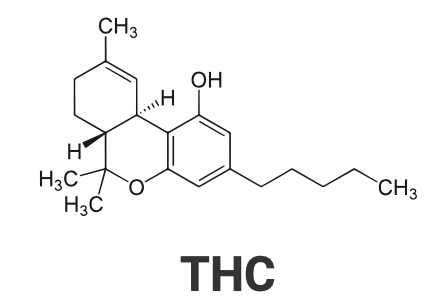Mmmm, there’s nothing like the smell of a freshly baked good coming out of the oven, especially if that baked good comes with a little extra oomph! If you’ve ever made a homemade batch of “special brownies,” then you’re likely familiar with decarboxylation, even if you’ve never heard the word before.

But what does decarboxylation mean exactly?
What Is Decarboxylation?
Decarboxylation refers to a specific chemical reaction where a carboxyl group is removed and CO2 is released.
When we talk about decarboxylation in the context of cannabis, we’re referring to the process of exposing cannabis plant matter to heat, causing the cannabinoid acids like CBDA and THCA to lose both a carbon atom and two oxygen atoms. This action transforms a cannabinoid acid, like THCA, into the familiar THC.

Why Is Decarboxylation Important?
Cannabinoid acids do not directly bind with our endocannabinoid receptors. Practically, this means that consuming THCA or CBDA won’t produce any of the effects of their decarboxylated cannabinoid cousins.
When we smoke hemp or marijuana, the exposure to the heat which generates the smoke automatically decarboxylates the material. However, when making an edible or concentrate, the finished product won’t necessarily be exposed to flame or heat. That means that the decarboxylation process has to occur earlier to activate the CBD or THC.
How To Decarboxylate
There are several different methods a budding baker can use to decarboxylate cannabis. With all techniques, the goal is to expose the cannabis material to enough heat to fully activate the cannabinoids without using so much heat that cannabinoids begin to degrade.
Decarboxylating In The Oven
The first method is decarbing cannabis in your oven. Keep in mind that oven temperatures are more of a general estimate than an exact temperature. Throughout the baking process, your oven will fluctuate between twenty degrees, meaning you’ll have to keep an eye on your cannabis in order to be precise.
Start by lining a baking sheet with foil or parchment paper, and preheat your oven to 225 degrees Fahrenheit. Make sure the oven rack is in the middle position before turning on the oven.
Next, coarsely break up your cannabis and spread it on the baking sheet. Using a grinder will cause the cannabis to become too fine and increase the chances of it burning.
Place your cannabis in the oven for 45 minutes—it should turn a golden brown color. Be careful not to overcook your cannabis in this stage. Let the decarbed bud cool for at least half an hour, and voila, your decarboxylated cannabis is ready.
To minimize cannabis odors, you can place your broken-up cannabis in a mason jar before placing it in the oven. This will add about 15 minutes to your cook time, and you’ll want to take the mason jar out of the oven every 20 minutes or so and give it a good shake to disperse the plant material evenly.
Decarboxylating In A Sous Vide
The sous vide method is a far more precise option for decarboxylating cannabis. If you already own one for general cooking, we highly recommend this method. If you’re regularly making home edibles, then an immersion circulator is likely a good investment.
Fill your water container to the appropriate level as per the instructions on your immersion circulator, and set the circulator to 203 degrees Fahrenheit.
Unlike with the oven method, you can finely break apart your cannabis using a grinder since there’s no risk of burning. Place the ground cannabis in a vacuum-sealed bag and place it in the water bath for 90 minutes. Let the bag come to room temperature and dry before opening.
Should I Decarboxylate Before Making Butter?
Many home cannabis cooks skip decarboxylation when making cannabutter since the infusion process already heats the cannabis material.

While it is true that some decarboxylation will take place while infusing, it won’t be nearly as precise as using one of the above methods. In order to maximize the potency of your butter, it’s always best to decarb first.
Does Decarboxylation Kill Mold?
Mold, or bud rot, is the bane of every cannabis cultivator. When your buds get moldy, you may be tempted to try and find some sort of use for the inflicted cannabis. Unfortunately, due to the health risks, it’s better to simply toss away your corrupted crop than risk harming yourself and others.
Can You Smoke Decarboxylated Weed?
Say you have some leftover decarbed buds after baking. Are they safe to smoke?
Smoking decarboxylated weed won’t harm you, but it likely has lost potency. You may be better off saving your decarbed flower for the next time you make edibles or concentrates.



